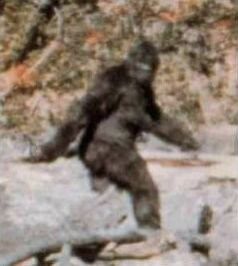Bigfoot Hair Samples Sought By Oxford University For Genetic Testing

A request for bigfoot hair samples doesn't come along too often, at least not from the hallowed halls of an institution like Oxford University. Yeti hunting? Not exactly an esteemed British university's forte.
But that's exactly what the school, along with the Lausanne Museum of Zoology, is requesting to use genetic testing to determine if the mythical Bigfoot is real.
The project, dubbed the Oxford-Lausanne Collateral Hominid Project, is led by Prof. Bryan Sykes, a geneticist at Oxford, and Michel Sartori of the zoology museum.
The myth of bigfoot (or sasquatch) in the U.S., and the yeti in the Himalayas, began when mountaineer Eric Shipton brought back photos of giant footprints in the snows of Mount Everest.
In the time since, a pseudo-cult has surrounded the mythical yeti, and it's western brother Big Foot. And while the niche of followers claim the mythical giant man-ape is real, they've decried the scientific community's lambasting of their passion.
I'm challenging and inviting the cryptozoologists to come up with the evidence instead of complaining that science is rejecting what they have to say, said Sykes, according to Discovery News.
The professor is skeptical his search will return anything of substance, but is taking a carefree attitude to the whole thing. Perhaps the discovery of a new species, or the Denosivans, a man-like species that lived in Siberia 40,000 years ago, would be a solid find.
It would be wonderful if one or more turned out to be species we don't know about, maybe primates, maybe even collateral hominids, Sykes told LiveScience. That would be the optimal outcome.
Sykes is first requesting a written, detailed description of the yeti or big foot samples people have accrued. Then, he and his team will curate the offerings and request samples that sound the most promising.
As an academic I have certain reservations about entering this field, but I think using genetic analysis is entirely objective; it can't be falsified, Sykes said. So I don't have to put myself into the position of either believing or disbelieving these creatures.
The genetic testing phase will last through November, with the results eventually published in a peer-reviewed scientific journal.
Several things I've done in my career have seemed impossible and stupid when contemplated, but have impressive results, Sykes said.
© Copyright IBTimes 2024. All rights reserved.





















